Archive for Garden Design
Different Kinds of Irrigation Systems
If you are a farmer, gardener or even a landscaper you probably know how important it is to have an irrigation system installed to supply your plants, gardens or crops with water. Most irrigation systems are used during dry seasons when rainfall is scarce but since there are several types of irrigation it would be important for persons to identify which type would best serve their needs.
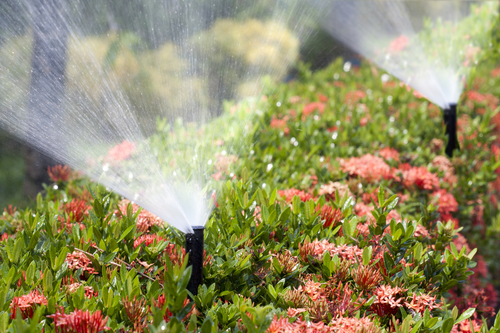
Lets Look At irrigation Systems
Irrigation techniques may differ in several ways but the basic concept of the system is that water is obtained from a source and is distributed to plants or crops. Generally the aim of the system is to equally and uniformly distribute specific amounts of water to each plant or crop.
Types of irrigation used include high or micro flow irrigation, sub-irrigation, in-ground irrigation, localized irrigation and even automatic irrigation systems. They are all utilized to best suit their specific purpose however the two, most, commonly, used systems are the high flow or micro flow irrigation systems.
With these two main types of irrigation systems one releases water with a high flow and the other distributes water with a low flow or a drip. The high flowing system operates so that water spreads heavily across the surface of the specified area, in order to wet and infiltrate into the soil and the low flowing system functions so that water falls in a dripping fashion and is delivered directly at the position of roots.
The high flowing system is mostly used when irrigating agricultural land. Here water levels that originate from the irrigation source and are used to flood or control the level of water in each distinct field. The flooding system is controlled by dikes which are slopes that help to regulate water levels. This form of irrigation is mostly seen with the cultivation of rice.
The low flowing or drip irrigation system as we know obtains water from a source and transports and delivers it to plants through emitters, mini rotors, micro sprays or drip lines in a dripping fashion where water goes directly to roots.This method has been seen as the most, water-efficient, method, of irrigation as it utilizes less water and once managed properly minimizes evaporation and runoff.
Since drip irrigation systems are the more domestic and commonly used system here are a few tips that can assist persons with operating and maintaining them so that they function as efficiently as possible.
For this type drip lines are most recommended and should be used for continuous rooting as they have flexible tubing containing tiny, water, flow, regulators, for evenly spaced water distribution.
Micro sprays and mini rotors clog easily, and should be regularly maintained. Monthly investigations should be conducted and if necessary repairs or replacements done to ensure there are no irregularities within the system.
Laying out emitters individually can also prove to be an efficient practice as this delivers water exactly where the plant needs. It reduces the amount of weeds produced and eliminates excess, irrelevant water. Persons also need to make sure that their drip system includes pressure reducers and filters as these ensure water is measured accurately and delivered at the specified rate.
Remember that these systems must be designed to prevent runoff, low head drainage and overspray. For more information on irrigation contact us.
Lawn Care In the Fall
Lawn care is necessary if you are to keep your garden looking its best. At the end of a busy and fun filled summer, your lawn may begin to demonstrate symptoms of wear and tear. Early autumn is an excellent time to maintain the damage and make sure that your lawn would be in good fettle for the upcoming year.
Lawn Care Guidelines
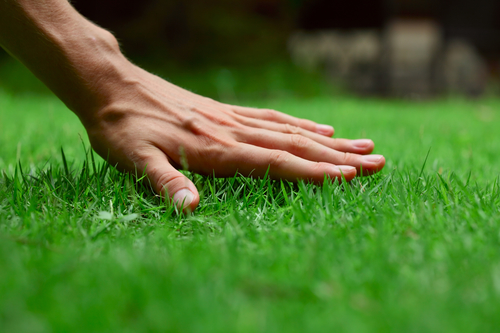
Before raking debris, you should kill any moss with a lawn moss herbicide. For larger lawns, you can use a motorized scarifier. Ensure that you use a spring-tined rake. Scraping your lawn enhances its look and adds vigor to the lawn. Establish air channels in dense turf by placing a border fork in the soil. This action will draw plugs out of the soil.
After scraping and aerating your turf, fill the holes with a top dressing. You can purchase your top dressing from garden or hardware stores. It is such an affordable and simple technique that you can also make your own top dressing.
After all the fun times and frequent use during the summer, your lawn may exhibit signs of degeneration. Therefore, early autumn is a superb time to maintain any devastation. Make sure that your lawn is in excellent health for next year.
With the use of gloves, put some granular autumn fertilizer evenly over noticeable squares. If no rain falls within three days of applying the fertilizer, then wet it. In the initial stage of autumn, your soil would be warm enough and damp to plant grass seed. Additionally, scatter seed to correspond with your type of turf. Apply this at half of the suggested rate for contemporary turfs. This helps to enhance any depilated spots.
If you want to improve on the way you take care of your lawn then contact DK Landscaping. We are the experts in plant and lawn care. We can help you create the right conditions for a healthy and much improved lawn and garden.
Time To Mulch
There are various kinds of organic mulches used in garden maintenance. They act as fertilizers giving your soil the nutrients and conditions needed for sustainable growth. The State of California has policies in place that govern the production of mulch. Take a look at the various kinds of mulches that are highly recommended:
Types Of Mulches
Newspaper is becoming more widespread as mulch. Shredded newspaper has been used to maintain a damp environment for plants during shipping. This technique has been used on land as well. The way this all works is because layers of newspaper have excellent water retaining capabilities. They also help to control weeds and manage soil temperatures. This is an excellent benefit.
Shredded Leaves can be utilized as mulch any and everywhere in your garden. This is one of the most natural forms of mulch. Many gardens have flourished by using this technique.
Grass Clippings is used in the isolated areas of your garden where you want to restrain weeds. Grass clippings also are prone to mass down the water causing it not to pass through.
As part of your gardening maintenance plan you should utilize a mulching mower and leave back the clippings on the lawn to supply added fertility to your soil. Nonetheless, if you place your grass clippings in bags do not discard of them, unless you have utilized weed killer or some other pesticide on your lawn. You should also know that synthetic lawn care items can be harmful to some flowers, so you may not want to use them in your garden. Grass clippings that are not treated should be placed in your compost bin or utilize as mulch for open areas are not yet planted.
Some gardeners hate to see leaves in their garden, and that’s a fact. Leaves really aren’t suitable for a formal garden. But if you cover your garden with the leaf mulch it tend to fusion into the garden in no time. This way you can still have the beauty of your garden untarnished while giving it the advantages of having mulch added.
During rainy times, unshredded leaves may mass together and fight off the water. If the leaves are too wet to shred, they can still be used. If you are considering implementing this gardening improvement technique then seek an expert gardening service. Contact us the gardening experts for more sound advice and gardening maintenance.
How to Transplant Shrubs in Summer
The best times of year to transplant trees and shrubs are spring and fall; however, certain situations may make it necessary to move your plants outside of those seasons. For example, you may want to take your shrubs with you if you are moving or you may have to move the plant because of the weather.

If you find it necessary to move a plant during the warmest part of the year, you will need to take certain steps to ensure its health. Here are some tips on how to move shrubs in the summer without harming them:
- Choose the Right Location
Transplantation represents a dramatic change and a plant will have to adapt to its new environment slowly in order to survive. This means that you will have to keep factors like sunlight, soil drainage and soil pH in mind when choosing a new location. - Dig an Appropriate Hole
You will need to dig a hole that is approximately twice as large as the shrub’s root system. The additional space allows the roots to grow into the new site comfortably. - Carefully Remove the Shrub
Work carefully to avoid damaging the root system when uprooting shrubs. You will want to take as much of it as you can. You will also want to move some of the soil from the old location to the new one. You can place larger shrubs on a tarp and drag them to the new location along with some of the soil. - Add Adequate Water to the New Hole
You will want to wet the hole thoroughly before placing the shrub into it but avoid oversaturating it as this can cause the shrub’s roots to rot. - Place Shrub in the New Hole
Along with the shrub, place some of the soil from the old location into the hole as well as some potting soil. Pat the soil down around the base to ensure that the shrub stays upright. You can add watering stakes to the ground so that the shrub can water at root level but this is not essential. Be careful to avoid damage to the roots when installing the watering stakes.
The quality of your landscaping plays a major role in your ability to enjoy your yard and in your property value. If you need help with moving shrubs or with any other aspect of landscape maintenance, contact us today. Our experienced landscaping crews know how to move your shrubs and trees quickly and without damaging them.
Plant Trees and Shrubs That Add Interest to a Garden in Winter
Tons of homeowners run down to their local nursery to pick up shrubs and small trees for their garden design. You can actually find some great deals by purchasing cold-hardy plants, shrubs and trees out of season, so to speak, prior to the thermometer dropping in September and October.
The problem is that these same homeowners don’t exactly know what to do with their cold-hardy plants and shrubs or whether they can set to work planting them in late fall and early winter or if they have to wait until the weather warms up in spring to put on their gardener’s hat.
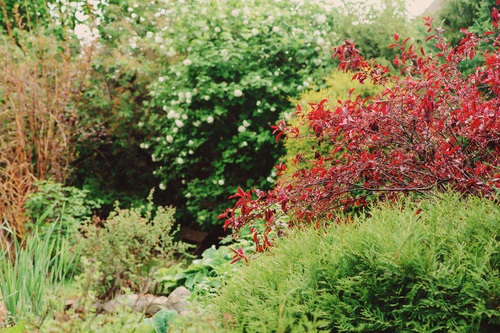
How to Deal with Cold-Hardy Trees, Plants and Shrubs
What you may not know is that a variety of shrubs, plants, perennials, and trees can survive and even thrive in – what the USDA terms – the coldest planting zones in the country.
So, the question no doubt on the minds of everyone in these more frigid hardiness zones is whether to keep your trees and shrubs in pots throughout the cooler months or whether you can get started in late fall.
The answer’s that you can choose to do either, but you can definitely set to work right now, start planting in the late fall, and beautify your garden and outdoor decor throughout the winter and into the verdant spring months. Evergreen shrubs and hawthorn are two popular options.
What you still want to do, though, is manage your expectations and perhaps set your sights lower than a veritable Garden of Eden springing up in the crisp winter months. Here’s how to get started:
- Follow Nature’s Lead
You would be very hard-pressed to find potted plants, much less artificial ones, growing wild out in nature.
Taken that to its logical extension, your plants and shrubs will typically be healthier and happier by being put into the ground than staying in a plastic pot in your garage throughout the winter season.
- What Should I Plant?
Evergreen garden shrubs are but one example of resilient shrubs that can really add another dimension to your garden and front lawn during the winter without causing too much heartache in terms of worry or added energy you have to expend to make it happen.
Both conifer trees and evergreen shrubs can make it through winter in one piece, and the needle-leaf style of evergreen shrubs are normally considered more robust in cold-hardy climates.
Yew and Juniper are two kinds of evergreen garden shrubs that are resilient, tolerant to cold temperatures and drought conditions, yet really benefit from developing their root networks early in the fall (if you’re thinking about planting these early) as opposed to waiting until early-to-mid spring.
Deciduous trees like the Japanese Maple, eucalyptus, birch or hawthorn tree can even demonstrate fruit growth in the winter, which really adds a splash of color and interesting contrast against the icicles and powdery, white winter snow.
- Going About It the Right Way
Year-round plants, shrubs and trees don’t actually need the extra shot in the arm that less hardy flora might.
There’s no need to use a crazy amount of fertilizer or growth agents in the late fall to get the most out of these trees and shrubs throughout the winter.
Still, realize that many of these flora grow upwards and their root networks are delicate at this early stage. Try not to move around or prune these shrubs early in their development.
Much and a little water in the fall are probably all these plants need to avoid desiccation and thrive for you year-round. Contact us today for more tips or help in getting started.
Xeriscape California Plant List
California boasts a rich variety of flowers, trees, and flora ~ a somewhat surprising fact considering the prevalence of arid landscapes and drought. Home and business owners who want an eco-friendly, economic landscaping solution would be wise to utilize xeriscape, a form of landscaping that combines drought-resistant plants, efficient irrigation, and thoughtful garden design to create beautiful outdoor spaces. To get started, check out this list of plants that will make a wonderful addition to your xeriscaping.
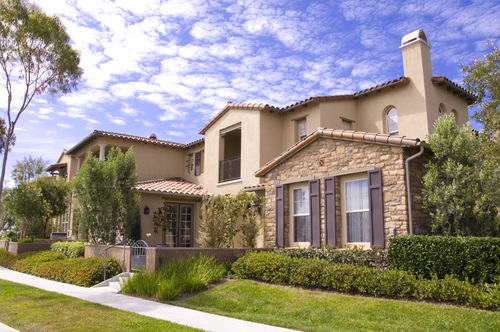
Aloe
Aloes are a variety of succulents that do well in dry environments. One common variety is Aloe Vera, also known as burn plant due to its ability to soothe sunburn. Aloe Vera can grow up to 3 feet in height and produces lovely yellow flowers. Although commonly grown as houseplants, Aloes can also thrive in xeriscape environments due to their preference for bright light and dry, well-draining soil.
Agave
This xeriscape-friendly plant is known for its use in making tequila! There are many different varieties, but all have a main taproot that discourages transplanting after they have been installed. A loose, well-draining soil is a must and plants prefer to dry out completely between watering. Agave tends to bloom once, then die, but often produces pups, or baby plants, that can replace the original.
Mexican Sage
A member of the Salvia family, Mexican Sage is a perennial that produces gorgeous purple or white flowers that can make it a stunning xeriscape addition. Moisture requirements are somewhat higher than for previously mentioned succulent varieties, so it may not be ideal for very arid locations. However, it is drought tolerant and often attracts pollinators like butterflies and hummingbirds.
Verbena
Verbena comes in many varieties, including lemon, rose, and purpletop, just to name a few. Lemon verbena smells fantastic and can be used to make herbal tea. They can be grown as annuals or perennials and are resistant to heat and drought. Depending on the variety you choose, they can get quite tall and bushy, often producing beautiful, brightly colored flowers.
Honeysuckle
Most honeysuckle vine varieties smell fantastic, attract pollinators, produce beautiful flowers, and come back year-after-year. Being heat and drought resistant and fairly low maintenance makes them a wonderful addition to xeriscape areas. Full to partial sun and a well-draining soil are preferable. A fence, trellis, or other support system helps them grow to their full potential.
Sedge Grass
Sedges are a large family of grasses that work well in place of more high maintenance turf grass. They tend to be adaptable and often require little water. California meadow sedge is native to the Pacific coast area and tolerates heat, drought, and even foot traffic. It can be used as part of an eye-catching xeriscape focal point or used to replace a more traditional lawn. Since it requires very little mowing and no fertilizers or other chemicals, sedge grass is a great, no-fuss addition to any landscape.
Hollyleaf Cherry
The hollyleaf cherry tree is a shrub native to the California coast that produces lush, evergreen leaves, cream colored flowers, and edible fruit. The fruit is not very fleshy though, so it probably won’t become your favorite snack, but birds and other wildlife may appreciate it. Hollyleaf cherry is very tolerant of drought, thrives in full to partial sun, and prefers well-draining soil.
Xeriscape landscaping techniques are sure to become more popular as awareness grows about the need to conserve water and choose drought resistant plants. DK Landscaping strives to create beautiful landscapes that function well in the natural environment, so call us or contact us via email today to get started on a xeriscape project for your home or business.
Narrow Walkway Flower Bed Ideas
Flower bed ideas can be quite easy to implement. Most gardens have walkways that are about two feet wide. Narrower walkways may help you to use a small space more efficiently.
However, they pose a unique design challenge to gardeners, landscapers and homeowners: how can you create and position flower beds so that they don’t visually overpower the walkways? Try these flower bed ideas to add variety and beauty to your space.

Perennial and Evergreen Flower Bed Ideas
Narrow walkways limit access to your flower beds, and make maneuvering through the space more difficult. Annual plants are flower bed ideas that can create headaches due to yearly replanting. By choosing perennials suitable to your climate, you’ll ensure that your plants come back each year and minimize the amount of work you (or your landscapers) must do.
You may also put evergreen plants on your list of flower bed ideas. These come back each year, and the plants won’t lose their leaves or fade in ways that require additional maintenance.
Keep Flower Beds Controlled
If your flower beds grow weedy or otherwise out of control, they can cut into your walkway. Normally that may be unsightly, but not a disaster. But if your garden’s walkways are narrow, this can make the pathway difficult to navigate, or even find. This is particularly problematic with gravel or dirt walkways, where the edges are already, often, poorly defined.
When going through your flower bed ideas, make sure that the line between the flower bed and the path is clearly marked. You may want a small fence, stone wall or other raised marker. Make sure your flowers are semi-regularly pruned back from the edges of the path, and that any weeds are removed. You may want to choose plants that grow more slowly, and that put off fewer vines or shoots for you to have to deal with.
Use Trellises
Trellises and fences are perfect flower bed ideas for climbing plants, that allow you more room to play. Be sure to choose climbing plants that don’t grow to too tall of a height, to minimize maintenance. Many vines are invasive, as well, so be sure that your final choice is native to your area.
Create a Unique Environment
Finally, once your flower beds are complete, your garden may feel crowded. Take advantage of this by creating a unique atmosphere. Delicate lighting along the edges of your path, or hanging from trees, can create a mysterious atmosphere like an enchanted forest. A little fence around the whole space, along with a gate, is one of those flower bed ideas that can make your garden feel like something out of a fairy tale.
Conclusion
When you want to implement your flower bed ideas, it’s time to call an expert. Contact us for a consultation about your yard and its specific needs, including repair, maintenance, irritation, and xeriscaping for saving water.
Inexpensive & Easy Backyard Ideas
Spring is just around the corner, and what better time than now to give your backyard a makeover? Whether you have a cozy yard or a sprawling retreat, there are a host of inexpensive and easy backyard ideas you can try that will enhance your lawn, garden and outdoor living areas.
Easy Backyard Ideas
- Create a living fence by decorating a wall with an espaliered tree. You don’t have to be a master gardener to do it, and it gives your yard a high-end look without the high-end expense. Espaliered trees are a great way to make a small yard look like it’s filled with greenery.
- Here’s one of the best money-saving backyard ideas. For an inexpensive way to add hardscaping – walkways, edging and retaining walls – ask your landscaping company if they have stone leftovers. Stacked together, the different shapes, sizes and colors make a beautiful elevated garden section that looks incredibly natural. Use low-growing groundcovers and other perennials to present a gorgeous burst of color.
- Sometimes, the simpler the better backyard ideas win the day. Create low-cost nooks by rearranging garden furniture in separate areas of the yard; perhaps one area for eating and another for relaxing. The idea is to create conversation zones where family and guests can gather to catch up and enjoy themselves. No need to buy new furniture – but coordinated pillows and chair pads are great for giving each area its own distinct look.

- One of the easiest backyard ideas for adding color is by using containers that are filled with annuals. Annuals are less expensive than perennials and shrubs but really pack a punch when arranged in containers. For a calm, retreat-like feel, use vessels of one color, though the shapes and sizes can differ.
- If you’re in need of a new piece of furniture, but it’s just not in the budget this year, try this fun DIY seating area constructed from low-cost concrete blocks that are fitted with wood beams and then a foam cushion. True sophistication for little money!
- Outdoor lights are one of everyone’s favorite backyard ideas. They’re fun, they say celebration and their sparkle adds a warm glow to backyard gatherings. Use different color string lights or LED cords to wrap a tree or line a pathway. You can even run a set down the length of the table for a lovely light to dine by.
- If you want to cut back on how much water-hungry lawn you have, check out interesting, less-expensive paving materials such as crushed rock and gravel. They’re perfect for placing underfoot at outdoor seating and dining areas. If you’re in love with the look of traditional, larger pavers, use fewer of them interspersed in your grass in order to cut down on your total outlay.
- Many hardscape elements, such as trellises, can be found at flea markets or garage sales. You may even have enough scrap materials around the house to construct one. Who doesn’t have a bunch of old frames packed in boxes just waiting to be used “one day?” Take some inspiration from this beautiful piece and put those frames to good use. If you love the rustic look, there’s no need to varnish or paint them. Trellis are one of the best backyard ideas for adding height and defining backyard traffic flow.
There’s always a way to get the beautiful backyard you’ve always wanted without having to break the bank. These fun and beautiful backyard ideas are the perfect way to get started!
Garden Design for Dry Shady Gardens
When you’re looking to improve the landscape around your home or business, dry areas with shade can be tricky when it comes to garden design. Luckily the modern practice of xeriscaping has provided many solutions that can be used to get a beautifully landscaped property even when planting in dry shade.
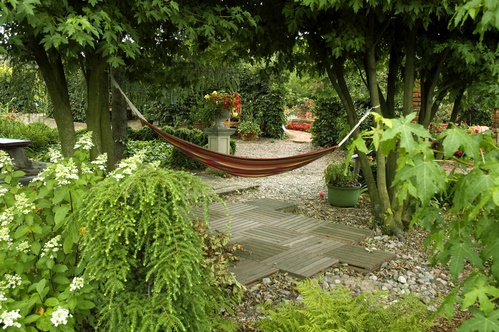
Basic Garden Design Principles
Any of the basics of good garden design apply to dry shady areas as well. You will want to think about how the area is going to be used, whether you prefer a casual or more formal style, and what your budget will be.
You will want to consider the size and shape of the plants and the visual lines they create. It can be helpful to start with the larger elements or focal points of your design, and then fill in the smaller details from there. Variety is necessary to create visual interest, but too many different colors, textures and plant species can create a chaotic look that lacks cohesive design. A common element such as a particular species of plant or a recurring color can help tie different areas together into an overall design.
For a successful dry shade garden design considering the water supply is vital. This is where consulting a landscape professional can be especially helpful. They will have ideas for making the best use of naturally available water. They may recommend grading an adjacent area to improve drainage, diverting extra water to a drier area. Including rain water harvesting in your garden design or changing irrigation methods may also be options.
The Importance of Plant Selection in Dry Shade Garden Design
One of the biggest decisions in garden design is choosing plants. You can get a garden design that is practical, unique and aesthetically pleasing, even in dry shade. It may limit your options a little more than having perfect growing conditions, but there are still plenty of plants to choose from. Skeptical? Check out this large list of plants for dry shade or this amazing list of native California drought tolerant plants. Many of these species grow just fine in shade. The growing popularity of xeriscaping means there are more plants available to homeowners and landscape professionals that tolerate dry conditions. Native plants will also grow better in dry shade since they are already adapted to local conditions.
One of the most useful garden design practices for dry shade is grouping together plants with similar water and nutrient requirements. Plants will not have to compete with each other to get what they need and will be more likely to thrive. Reducing the amount of turf lawn in a dry shady area or using grass varieties that require less water can also be helpful.
Soil Preparation is Key
When it comes time to make your new garden design a reality, soil preparation is especially important. The water and nutrient requirements of the new plants and condition of your existing soil will determine your exact course of action. In general, adding organic matter such as compost may be necessary. This will help your dry soil retain water and increase the nutrients available so your plants can thrive. Mulch also serves the same purpose and additionally deters weeds. Using these together will give your new plants the best chance to establish a good root system and promote growth.
While there are lot of things to consider in good garden design, the effort can save property owners money in the long run by reducing fertilizers, water, and maintenance. Get help with your landscape design and maintenance needs. Contact us today!
7 Gorgeous Flowering Shrubs for Shade
A shady yard doesn’t have to stop you from having a gorgeous, lively landscape. Flowering shrubs that thrive without direct sun are a perfect choice for jazzing up your landscape, and there are many varieties to choose from. Here are our top 7 choices for flowering shrubs that work well in Zone 9:
Oakleaf Hydrangea (Hydrangea quercifolia species)
With its spikes of beautiful white flowers and distinctive oak tree-shaped leaves, this shrub attains an impressive height and width of six to 10 feet and is partial to moderate shade. In late summer, its blooms change to a pinkish purple, and come fall, the leaves take center stage and put on an impressive show of orange-red, purple and brown, which lasts well into winter.
Rhododendron (Rhododendron species)
A shrub with its own fan club, there are more than 900 species of the Rhododendron. Most grow to a height and width of eight to 10 feet, bloom in late spring, and then present attractive foliage after that. This is the shrub to choose if you’re looking for colorful shade flowers – and with all the different varieties on the market you’ll have no problem finding your favorite color.
Serviceberry (Amelanchier species)
Another shrub with multiple varieties to choose from, you’re sure to find one that meets your yard’s aesthetic needs. The company running serviceberry is a compact four to six-foot shrub that’s perfect for smaller landscape layouts. A year-round winner, blooms debut in the spring and edible berries make a June appearance. Those who love low maintenance shrubs will love that it requires little pruning.

Japanese Kerria (Kerria Japonica species)
Slow to start but followed by rapid growth, this three to six-foot shrub is the one to choose for year-round color. Bright green leaves that appear in summer last through most of the fall, when attractive yellowish green or bright green stems appear to brighten up your winter landscape. Gorgeous, bright yellow blooms make a spring appearance.
Virginia Sweetspire (Itea Virginica species)
With vivid red leaves that last well into the fall, these four to five-foot shrubs burst with fragrant summer flowers and are extremely resistant to disease or insect problems. The Little Henry is a popular choice that gives better-known shrubs such as the burning bush a run for their money.
Red Chokeberry (Aronia Arbutifolia species)
Stunning crimson leaves in the fall and bountiful red berries that brighten up even the drabbest of winters, these shrubs grow from six to 10 feet high. The red chokeberry is a resilient shrub that does well even in poor soil, and it tolerates both wet and dry conditions. Glossy summer foliage complements the small white or red-tinged blooms that make their appearance in the spring.
Sweetshrub (Calycanthus floridus)
A versatile classic, this moderate-shade shrub continues to gain popularity due to its xeriscaping properties. It works well in dry to damp soil and grows from four to six feet tall. The sweetshrub’s maroon flowers bloom from spring to summer and are often highly fragrant; the leaves on these shrubs have a coarse texture. If you have a yard that sees frequent visits from deer, this is the shrub for you.
Finding just the right shrubs to plant in the shady areas of your landscape may seem like a challenge, but as these selections show, there are plenty of varieties to choose from. Whether you choose one particular species as a show-stopping focal point or mix and match several kinds, these recommended shrubs should bring some beautiful color and life to even the most sun-deprived areas of your yard. Contact us for consultation on your gardening project.





